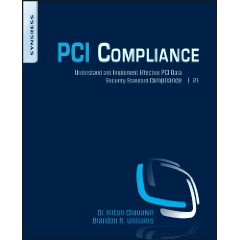Here is my review for “
Security Information and Event Management (SIEM) Implementation” by David Miller, Shon Harris, Allen Harper, Stephen VanDyke, Chris Blask. It has just been published to Amazon as 4 stars out of 5.
I was looking forward to reading this book for a few months – pretty much since the time I’ve heard that it is being written. Obviously, I was very excited when it arrived in my mailbox. Now that I am done reading it, I can say it left a mixed impression. Mostly positive –but still mixed. I definitely enjoyed reading it, despite (or maybe due to) the fact that I’ve been involved with SIEM for nearly 10 years.
Let me first go through all the chapters and then give my overall impression. The book is organized in three big parts: “introduction to SIEM: threat intelligence for IT systems”, “IT threat intelligence using SIEM systems ” and “SIEM tools.”
Chapter 1 covers security basics with minimum connections to SIEM. It might have that over-simplified refresher of what information security is about.
Chapter 2 can be summarized using the quote from the chapter itself: “the bad things that could happen.” It contains another refresher on attacks, somewhat jumbled and somewhat dated. We’re not really touching SIEM yet at this point.
Chapter 3 has an author’s view of regulatory compliance: the usual suspects are mentioned – PCI DSS, HIPAA, FISMA, SB1386, SOX, GLBA, etc. HIPAA is not misspelled which counts as good news

Chapter 4 has a bizarre name: “SIEM concepts: components for small and medium-sized businesses.” It contains an overview of SIEM with little focus on SMB. It is mildly confusing (for example, it calls LogRhythm “a commercial syslog server”). It contains a few outright mistakes as well (like a mention of one log management vendor whose application reportedly covers ”all 228 PCI controls”). The chapter tries to talk about everything (yes, even GRC) and makes a very weak impression.
Chapter 5 looks like a twin of the previous chapter. It also contains an overview of SIEM, but a different one – a better one, in fact. These two chapters don’t contradict each other much, but joint their presence in the book is mysterious and somewhat confusing.
Chapter 6 is a sudden break from SIEM into incident response. It does contain a few useful – but high-level- flow charts for incident response. I doubt that it was written by somebody who did much incident response however.
Chapter 7 is both a curse and a blessing. I loved the ideas in the chapter – using SIEM for BI – but I hated the fact that its author didn’t even bother to check what “SIEM” abbreviation stands for (see page 116)…
Chapter 8 and Chapter 9 are about OSSIM/AlienVault. From all the SIEM product chapters below, these are the weakest and the least useful. They offer little practical guidance and miss – yes, really! – most the details you’d need to know before deploying OSSIM in production. I was especially annoyed by “screenshot-three lines of text-screenshot-three lines of text…” model that most of Ch 8 and Ch 9 follow. It makes pages 152-166 just wasted paper. Ch9 tries to be a bit more useful (has two case studies), but collapses under the load of too many screenshots as well.
Chapter 10 and Chapter 11 talk about Cisco MARS. Since nobody cares about MARS anymore, I won’t be reviewing them here.
Chapter 12 and Chapter 13 cover Q1Labs SIEM. Unlike the above, these are actually useful for practical architecture planning of QRadar deployments. These chapters also contain useful SIEM insights – still, even these can benefit from more real-world tuning tips. The case study in Ch13 is useful as well. If you are thinking of getting a Q1Labs SIEM, grab the book to quickly review what you will encounter when you get the product.
Finally, Chapter 14 and Chapter 15 cover ArcSight SIEM. Despite minor mistakes and “vendor whitepaper feel,” the chapters would be handy for people in early stages of selecting, reviewing and deploying ArcSight SIEM. The chapters suffer a bit from trying to duplicate product help – you’re more likely to learn how to patch ArcSight them how to use it well.. Sadly, no case studies are included in these chapters.
Overall, the book has unfortunate signs of being written by a team of others who didn’t talk to each other. Despite the promises of implementation guidance, it leaves some of the very complex SIEM issues untouched – and even unmentioned. Very few case studies (some good ones are stashed in the appendix for some weird reason) and few tips and tricks for real-world SIEM implementation. Also, it is much stronger on the “what” then on “how.” Still, I suggest that people buying, using and building SIEM products, get their own copy and read at least a few chapters relevant to them. You will likely not be disappointed.
![]() )
)



